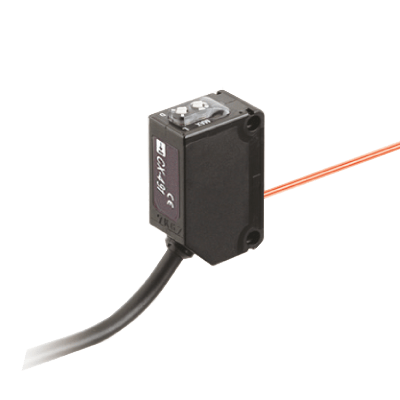Panasonic CX-493-P-J Sensor: Features, Applications, and Buying Guide
Key Features of the Panasonic CX-493-P-J Sensor
- Precision Detection: The CX-493-P-J offers millimeter-level accuracy, capable of detecting even small objects with rapid response times.
- Compact Design: Its small form factor makes it ideal for use in tight spaces and integration into complex systems.
- Environmental Resilience: Resistant to dust, moisture, and mechanical impacts, it operates reliably across a wide temperature range.
- Energy Efficiency: Low power consumption supports long-term usage while minimizing operational costs.
- Wide Application Range: Suitable for various industries and tasks.
Applications of the Panasonic CX-493-P-J Sensor
The Panasonic CX-493-P-J finds extensive use across industrial and commercial sectors. Here are some of its common applications:
- Production Lines: Ensures parts are correctly positioned, reducing error rates during manufacturing.
- Automotive Industry: Detects small components and optimizes processes in vehicle assembly lines.
- Packaging: Verifies the accurate placement of products, minimizing packaging errors.
- Logistics and Warehousing: Tracks product positioning, expedites shipping processes, and enhances inventory management.
- Electronics Assembly: Assists in the precise placement of delicate electronic components to maintain quality.
- Food Production: Ensures products are transported safely and packaged correctly while meeting hygiene standards.
Benefits of the Panasonic CX-493-P-J Sensor
The CX-493-P-J sensor offers numerous advantages, making it a preferred choice for various applications:
- Reliable Performance: Operates consistently in challenging conditions, thanks to its broad temperature tolerance and resilience.
- Easy Integration: Seamlessly integrates with existing systems, simplifying installation processes.
- Low Maintenance: Its robust construction ensures longevity and reduces maintenance costs.
- Versatility: Adaptable to diverse industries and applications, highlighting its multifunctionality.
- Cost-Effectiveness: Combines affordable pricing with energy efficiency, offering savings over time.
Buying Guide for the Panasonic CX-493-P-J Sensor
When purchasing the CX-493-P-J, consider the following important points:
- Authorized Supplier: Ensure you buy from an authorized Panasonic distributor to guarantee originality and warranty.
- Price Comparison: Evaluate different offers in the market to find the best deal.
- Technical Support: Opt for a supplier that provides pre- and post-purchase support.
- Product Documentation: Verify technical specifications and compatibility to ensure the product meets your needs.
- Stock Availability: Check stock levels, as this popular product may sell out quickly.
Additional Insights on the Panasonic CX-493-P-J Sensor
The Panasonic CX-493-P-J sensor is more than just a detection device; it is a comprehensive solution that contributes to smarter and more efficient production systems. By offering high accuracy and rapid response times, it helps businesses reduce operational errors and achieve consistent product quality. This reliability is especially crucial in industries such as automotive, electronics, and food processing, where even the smallest mistakes can lead to costly downtime or compliance issues. Its compact design further enhances its usability by allowing seamless integration into modern automated systems where space is limited.
Another significant advantage of the CX-493-P-J sensor is its long-term cost-effectiveness. Its energy-efficient design minimizes electricity usage, making it a sustainable choice for environmentally conscious businesses. Additionally, its durable build reduces the need for frequent replacements and lowers overall maintenance costs. When combined with Panasonic’s strong after-sales support and the availability of spare parts, this sensor ensures long-lasting performance and dependable operation. For companies aiming to stay competitive in a fast-paced industrial environment, investing in the CX-493-P-J provides not only technological reliability but also measurable economic benefits in the long run.

